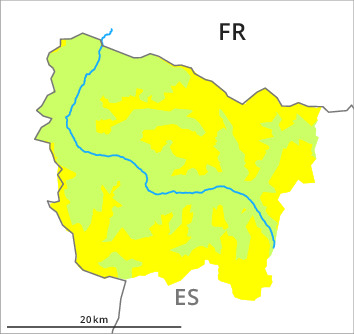
Danger level

2200m
Avalanche Problem

Wind-drifted snow

2200m


Wind slabs represent the main danger.
As a consequence of new snow and a moderate to strong wind from northwesterly directions, mostly shallow wind slabs formed since Sunday in particular adjacent to ridgelines and in gullies and bowls. These can in some places be released by people, but they will be small in most cases. On wind-protected shady slopes Explanation: "these" may only stand for "these avalanches" can be released easily and reach medium size in isolated cases. As a consequence of new snow and a moderate northerly wind, further wind slabs will form by the early morning in particular adjacent to ridgelines in all aspects.
Fresh and somewhat older wind slabs must be evaluated with care and prudence. The wind slabs will be covered with new snow in some cases and therefore difficult to recognise. Apart from the danger of being buried, restraint should be exercised in particular in view of the danger of avalanches sweeping people along and giving rise to falls.
Fresh and somewhat older wind slabs must be evaluated with care and prudence. The wind slabs will be covered with new snow in some cases and therefore difficult to recognise. Apart from the danger of being buried, restraint should be exercised in particular in view of the danger of avalanches sweeping people along and giving rise to falls.
Snowpack
>Up to 10 cm of snow has fallen since Sunday above approximately 1500 m. The northwesterly wind has transported the fresh and old snow significantly. Some fresh snow and the scattered mostly small wind slabs are poorly bonded with the old snowpack in particular on wind-protected shady slopes above approximately 2000 m. 5 to 10 cm of snow will fall until the early morning in all altitude zones. As a consequence of the light to moderate northerly wind the prevalence and size of the avalanche prone locations will increase as the day progresses.
In its middle, the snowpack is largely stable. At intermediate and high altitudes snow depths vary greatly, depending on the infuence of the wind. At low altitude from a snow sport perspective, in most cases insufficient snow is lying.
In its middle, the snowpack is largely stable. At intermediate and high altitudes snow depths vary greatly, depending on the infuence of the wind. At low altitude from a snow sport perspective, in most cases insufficient snow is lying.
Tendency
Friday: Significant increase in danger of dry avalanches as a consequence of the snowfall.